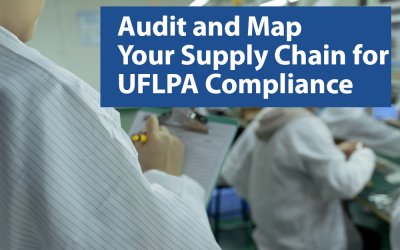Imagine that you’re on a plane from Los Angeles to New York, and the flight crew is preparing for landing. They instruct you to power down your electronic devices, but not everyone does.
Some of the devices on board are unintentionally emitting radiofrequency (RF) energy that interferes with sensitive equipment in the cockpit. As the pilot attempts to land, the interference makes getting to the ground more difficult and creates a life-threatening experience for everyone onboard.
This is the type of scenario that a regulation called FCC Part 15 is designed to prevent. It aims to ensure that the electronic devices you use in your everyday life do not interfere with the other devices around them.
If you’ve been developing any type of electronic device, you need to ensure you’re compliant with this regulation. Here we introduce the basics of FCC Part 15 to give you a general idea about how to go about ensuring compliance. Please note that this is not legal advice and contains general information only.
Table of Contents
What is FCC Part 15?
The Federal Communications Commission (FCC) governs various parts of the US Code of Federal Regulations (CFR). Among them is 47 CFR Part 15, which covers regulations for radio frequency devices. These devices include Bluetooth and WiFi devices, mobile phones, computers, coffee makers, and more.
There are two key types of devices that this regulation applies to — Unintentional Radiators and Intentional Radiators.
An unintentional radiator is a device that does not contain a radio but radiates electronic noise. This can include devices with chips clocked at 9KHz or higher and devices that emit radio waves like a radio or TV receiver.
In contrast, an intentional radiator is a device that communicates with radio waves at low power. These might include Bluetooth and WiFi transmitters, hotspots, wearable devices, mobile phones, and more.
What are the FCC’s Requirements for These Devices?

FCC ID and compliance verbiage on a computer keyboard
Image Source: Marc Mongenet, CC BY-SA 4.0, via Wikimedia Commons
Any device that falls under the umbrella of Part 15 needs to go through the authorization process set forth by the FCC. Before you can import it, market it, or sell it in the US, you need to comply with the FCC’s rules. This includes testing and labeling, and some types of equipment need to be certified by the FCC.
Testing Requirements
In general, devices subject to Part 15 need to be lab tested to ensure they comply with the regulation’s standards. This testing verifies that the device complies with specific radio emission limits.
Certification Requirements
After passing the required tests, some types of equipment also require FCC approval. This process is called certification, and it involves submitting your test reports and various documents for administrative and technical review by the Telecommunications Certification Body (TCB).
Labeling Requirements
Devices subject to the Part 15 regulation also need to be labeled and include specific information on their packaging or in their manual.
What Steps Should You Follow if You’re Developing a Part 15 Device?

The first thing you need to do is determine which rules apply to your product and what type of testing you need to conduct. This can include determining if it is an intentional or unintentional radiator.
Many, but not all, types of unintentional radiators require testing plus a Supplier’s Declaration of Conformity (SDoC), which is self-issued. However, they do not need to go through the certification process.
If a product is an intentional radiator, like a WiFi or Bluetooth device, it also needs to go through the FCC’s certification process.
To determine the appropriate steps for your product, we recommend you work with a compliance consultant and reach out to them as early in the development process as possible. If you need a resource, feel free to reach out, and we can connect you with one of our consulting partners.
Be careful because failure to comply with these regulations can lead to fines by the FCC and having the distribution of your product stopped dead in its tracks. Therefore, as with any type of product, compliance should not be an afterthought. Do adequate research and engage with experts such as consultants and testing labs to ensure you take the proper steps.
Lab Testing: How to Get Started
As a consumer product importer, lab tests help you ensure that your products are compliant with regulations in the country of importation.
We’ve put together this guide to help you get started with lab testing so that you can make your products available for sale sooner rather than later. Avoid fines and customs issues by starting off on the right foot.





Helllo. Part 15 of the fcc rules? So w/ the least amount Chinese and science talk can u make it simple for me. As far as from what I’ve been told is it true that the undesired operation means that someone could actually control your item with another item at low or high voltage? That somehow because i bought this item I am at risk and aware of the fact of being at risk to undesirable/unaware operation. I’m not articulating this as well as I’d like to at the moment but was hoping you could break that down for me in English please.
Hi Shaun,
The purpose of FCC Part 15 is essentially to prevent devices from interfering with each other unintentionally. For example, if one person presses their garage door opener and their neighbor’s garage opens. Or if you play music on your smartphone and it goes to someone else’s bluetooth speaker. The FCC has set specific standards that companies need to comply with to avoid this type of scenario.
So if someone is controlling my home internet and my devices remotely using my certificate and keys saying they are me and they have made my life miserable for almost 5 1/2 years and I am under attack!
Sorry to hear about your situation, Patty. It seems unrelated to the content of our article, but it’s possible someone may have hacked your router. Perhaps check this article. Best of luck.
Thank you for the information, this clears up why some devices that I thought were unrelated to electromagnetic interference had this ‘FCC rule 15’ sticker on them.
Glad you found it helpful!